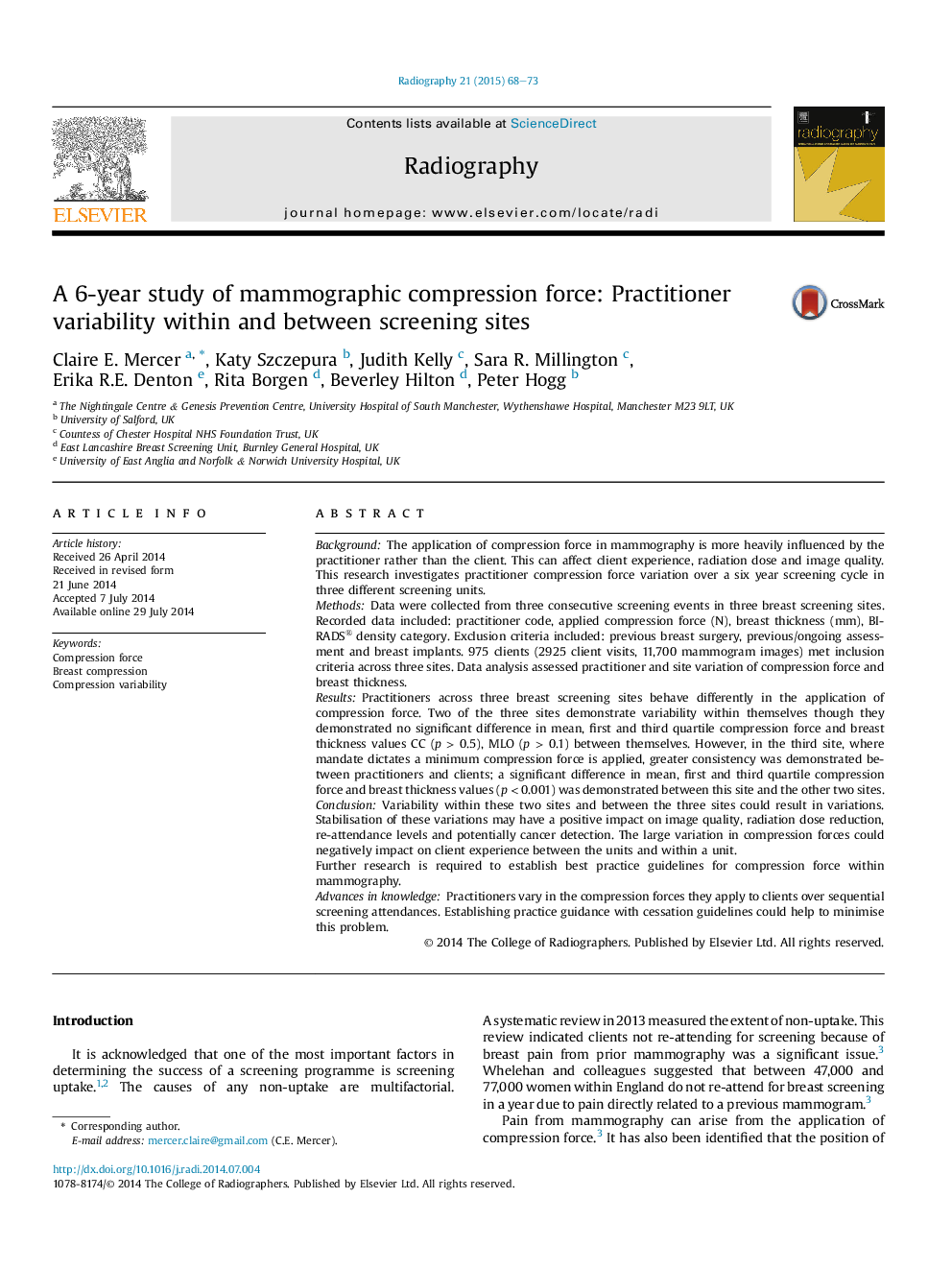| کد مقاله | کد نشریه | سال انتشار | مقاله انگلیسی | نسخه تمام متن |
|---|---|---|---|---|
| 2738355 | 1148178 | 2015 | 6 صفحه PDF | دانلود رایگان |
• Practitioners across 3 breast sites behave differently in the application of compression force.
• Large variation in compression could negatively impact on client experience and screening uptake.
• Stabilisation of variations may have a positive impact on image quality and re-attendance levels.
BackgroundThe application of compression force in mammography is more heavily influenced by the practitioner rather than the client. This can affect client experience, radiation dose and image quality. This research investigates practitioner compression force variation over a six year screening cycle in three different screening units.MethodsData were collected from three consecutive screening events in three breast screening sites. Recorded data included: practitioner code, applied compression force (N), breast thickness (mm), BI-RADS® density category. Exclusion criteria included: previous breast surgery, previous/ongoing assessment and breast implants. 975 clients (2925 client visits, 11,700 mammogram images) met inclusion criteria across three sites. Data analysis assessed practitioner and site variation of compression force and breast thickness.ResultsPractitioners across three breast screening sites behave differently in the application of compression force. Two of the three sites demonstrate variability within themselves though they demonstrated no significant difference in mean, first and third quartile compression force and breast thickness values CC (p > 0.5), MLO (p > 0.1) between themselves. However, in the third site, where mandate dictates a minimum compression force is applied, greater consistency was demonstrated between practitioners and clients; a significant difference in mean, first and third quartile compression force and breast thickness values (p < 0.001) was demonstrated between this site and the other two sites.ConclusionVariability within these two sites and between the three sites could result in variations. Stabilisation of these variations may have a positive impact on image quality, radiation dose reduction, re-attendance levels and potentially cancer detection. The large variation in compression forces could negatively impact on client experience between the units and within a unit.Further research is required to establish best practice guidelines for compression force within mammography.Advances in knowledgePractitioners vary in the compression forces they apply to clients over sequential screening attendances. Establishing practice guidance with cessation guidelines could help to minimise this problem.
Journal: Radiography - Volume 21, Issue 1, February 2015, Pages 68–73
